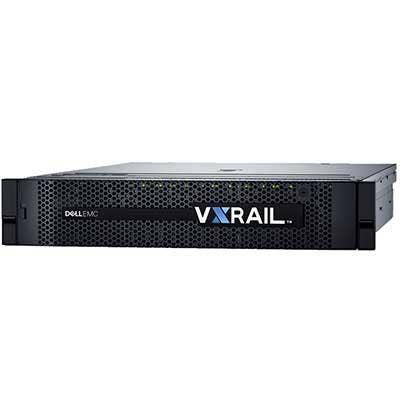Chad Sakac On Dell EMC's Push To Turn Hyper-Converged Infrastructure Into A Utility
The New Hyper-Converged Infrastructure
Hyper-converged infrastructure is one of the industry's hottest markets. Chad Sakac, president of the converged platforms division at Dell EMC, speaks about how Dell EMC's new 14G servers will fit into hyper-converged infrastructure, and how the company will turn HCI into a utility.
Get more of CRN's coverage of Dell EMC World 2017 .
What's the biggest change going forward with Dell EMC's converged and hyper-converged infrastructure business?
We're going to put the pedal to the metal. We're going to bring everything from 14G updates to PowerEdge. We're going to leverage that to the hilt across VxRail, VxRack and Dell EMC XC. We will be bringing all the innovations that you see from VMware over time into the family. We're going to be adding rich data protection capabilities to everything in the portfolio. And we are going to blow people's minds with the cloud [with] a 100 percent utility model with built-in price decreases over time.
In the end, I jump out of bed every day and say, 'What's our mission at Dell EMC?' It's really to be the leader for customers as they go through their transformations over the next few years. What's my team's part in that? We're the 'Simple Team.' We make everything simple.
What is the biggest change you are bringing to Dell EMC World?
We're going to do something that I think is completely an industry first. We'll be launching this thing called CloudFlex. CloudFlex takes the entire economic construct and utilizes the whole thing. This isn't a loan. It's not a lease. It's not a price-packaging exercise. As Dell EMC, we have the strongest HCI portfolio in the market. We're the fastest growing in units and revenue dollars. It's not a sideshow for us. It's very central to us. …
As the largest single infrastructure company in the world that also happens to be a private entity, why wouldn't we leverage that position to help our customers adopt and accelerate the adoption of HCI?

How will you leverage it?
We're announcing that customers will be able to get VxRail and Dell EMC XC, and consume it in the traditional way, which is a capital purchase, or pay for it on a per-month basis. And they'll be able to return it at any time. After 12 months, there's no return fee. So there's no downside after a 12-month period to do a return.
And, unlike most traditional models of doing leasing and finance, this is a case where the capital costs and the pay-per-month cost over a three-year period are the same.

How does this new model work?
We said we really want a model like how public clouds work. That you should pay slightly less over time. So, for example, if the capital cost was $100,000, a customer could say, 'I'll pay $3,000 per month in year one, I'll pay $2,000 a month in year two, and then in year three I'll pay $1,000 a month, and at any point in that, I can return it.' It's extremely simple. It does not require complex financing mechanics. It has a built-in price decline over time. The customer response and the partner response has been very, very positive.
So you are turning VxRail into a pay-by-month utility?
It'll be available as a pay-by-month utility. … There's no lease term. [Users] can return it any time, and after the first 12 months. There's not even a fee for doing the return. There's a fee in the first 12 months, but after that there's no fee for a return. They can return it in part or in whole. Let's say that they start with four nodes in their HCI cluster, and then they grow it to 100, and then say they want to return 20.
Can customers do upgrades along the way?
Along the way, you can add newer-generation nodes. That's one other benefit of HCI: There's no such thing as a migration. You can have node types that are of different generations inside clusters, and be able to refresh them in a way that's non-disruptive. We haven't yet gotten to the point where it's like an iPhone where you can sign up to get a new unit every two years or whatever. But we may very well go that far after our customers and our partners give us feedback about this new approach.